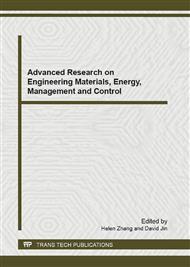p.265
p.270
p.276
p.281
p.285
p.290
p.295
p.299
p.304
Analysis on Vibration Conductivity in Walls of Hydropower House Based on Power Flow Theory
Abstract:
Basing on the theory of power flow, frequency response analysis was acted on in a hydropower house under dominant frequency with measured data of Three Gorges Station in spiral case and draft tube. Power flow in walls was calculated by APDL procedure and the properties were analyzed. The conclusion is that longitudinal wave is the main method in walls of the powerhouse, energy is reflected and stacked at the top of the walls. Displacement along the river changes and power flow in walls decays obviously. Intensity of vibration origin and distance between the vibration and the wall are both the influencing factors,increasing the stiffness of buttressed walls takes the role of limiting flexural wave and shear wave effect
Info:
Periodical:
Pages:
285-289
Citation:
Online since:
January 2012
Authors:
Keywords:
Price:
Сopyright:
© 2012 Trans Tech Publications Ltd. All Rights Reserved
Share:
Citation:


